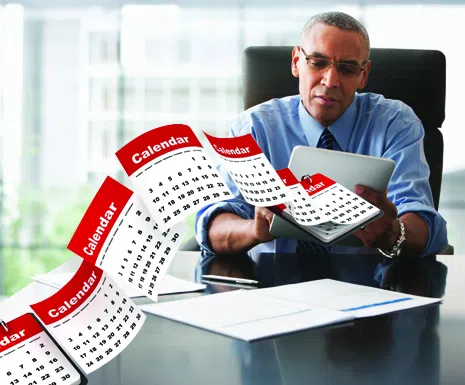Employees are often the face and voice of home service companies. While those in leadership roles are guiding the business from behind closed doors, it’s the technicians, CSRs, and office staff who are interacting with customers regularly. When a customer meets a friendly face or speaks to an energetic employee, it sets the tone for how they perceive the company.
Measuring Employee Performance
Ensuring employees are performing at their best is vital to the success of home service companies. An accurate measure of employee performance will vary from person to person, but the general rule by which to measure success can be determined first by the person’s ability to reach an intended end goal. But this can only be achieved when the goals and expectations have been clearly communicated to them in advance. For my training and coaching, I like the example given by Stephen R. Covey and one which he demonstrates in one of his videos. Covey talks of tasking his son with the responsibility of keeping their yard green and clean. He offers a very clear expectation of what the result must be, but then allows his son the freedom to do the job the way he sees fit. I believe this model can be applied to your employee performance as well and can be a good yardstick by which to measure employee performance.
Start with providing an employee with a clear goal and then give them the freedom to do it. Once you have clearly defined the task and expectations --- assuming your employee has been well trained --- then you can measure performance by how successfully the employee has done the job based on those expectations.
It's important to note that being busy for hours doesn’t equate to great performance. Busy work can also be incredibly ineffective work. The performance review should be based on how successfully the employee delivers the end goal as assigned.
Factors Impacting Employee Performance
Factors that influence an employee’s performance can often directly be traced back to the leadership team. Three major factors that affect a team’s effectiveness, are clarity, autonomy, and skillset.
Clarity. Ask the following question. Does the employee fully understand the goal and mission of the company as well as what’s expected of them? Lack of clarity can cause stress and lead to employee burnout. An employee without clarity feels like they lack purpose and direction, and in the expectations phase, this can create a situation where the individual will find meaningless tasks to perform just to feel like they’ve accomplished something during the day.
Autonomy. Autonomy pertains to the freedom given to the employee to accomplish a task based on their decision-making. If an employee doesn’t have the autonomy to make decisions on how their job is done effectively, it can lead to feeling a lack of value by the employer – like they are only a cog in a machine. If employees don’t have creative freedom on how to perform their jobs, they don’t feel empowered to use their unique creativity and instead, simply follow orders. Over time, this management style can hurt the company and productivity.
Skill set. Having the skill set means an employee feels capable and trained like s/he has the ability and skill set to complete the job. This is the third major factor that will lead to successful employee performance. Almost nothing is worse than feeling like you are not good at your job or you lack the skills and training. If an employee doesn’t know how to do the job, they will become discouraged and continue comparing themselves to other successful employees. This can be wholly demoralizing and lead to frustration, ineffectiveness, high turnover, and stagnated growth.
4 Steps to Improving Employee Performance
Author, business consultant, and co-founder of What Drives Winning Conference, Brett Ledbetter, often states that it’s a leader’s job to define, manage, and model expectations. If you are seeing a diminished performance on tasks, or you are looking to improve your employee performance, ask your leadership team these questions:
Have you defined project expectations and provided the resources for the employee to achieve the expectations? Do you hold the employee accountable for it and whenever possible, help them reach that goal? These questions are instrumental when determining a metric for an employee’s success rate. This leads to the following four steps, ones which I think can directly improve employee performance.
1. The first step is to communicate your purpose, mission, and core values to your people. As a CEO, I have discovered that this is paramount to the success of any collective goal. Clear communication will help employees understand the overall goals of the company and help define “the why”. While it sounds cliché, it’s vital to practice this every single day. I’ve seen many companies be great at this, but then slip up. Complacency can lead to a dramatic drop in performance.
2. Once you’ve communicated the purpose, mission, and core values of the company, the second step is to help every individual see how these steps apply to them and their job specifically. This ties back into clarity. An individual can understand the company’s purpose, but if they don’t understand how it applies to their role, it may result in a disconnect. So, you must take steps to help them recognize how their job is important to the overall purpose and mission of the company.
3. The third step is to provide training. Remember, if a person is bad at their job, it can demoralize them and promote continued poor employee performance. You have to offer ample amounts of training to help individuals get better at the tasks you ask them to complete. Training can result in both job growth and personal growth. If an employee feels like they are excellent at their job, they may begin to push for more responsibilities and higher positions.
4. The fourth and final step to improving employee performance is to give them freedom. You want to give them autonomy to make decisions. Allowing an employee to be creative in accomplishing their end goal shows you trust them to perform and complete their task competently. By building this trust, you are improving their overall experience while also improving their employee performance.
Completion of these four steps requires exemplary leadership which takes work. It’s not a one-size-fits-all formula. It comes down to more attention paid to employee engagement and is most effective when done on a one-on-one basis. Many leaders attempt to accomplish these steps on a company-wide scale by having a big company-wide training or meeting that checks all the boxes. When you try to accomplish company-wide performance improvement via big broad stroke-referendums, something always gets lost in translation. Generally, people fall through the cracks. So, while company-wide training can be effective occasionally, it is recommended to approach employee performance and improvement, with more individualized or small departmental training. Otherwise, a wide-sweeping overview may be interpreted as a lack of attention to detail or an overall lack of caring for the people who work for your company.
Creating a personal atmosphere where you engage with your team and communicate directly with employees, is the best way to implement the necessary steps to improve employee performance.
Zac Garside is the CEO of Power Selling Pros. During his time at Power Selling Pros, he has been a coach and trainer with the company, working with hundreds of companies and vendors during his tenure. His passion for the industry illuminates through his ability to discover clients’ pain points and offer solutions for success.





